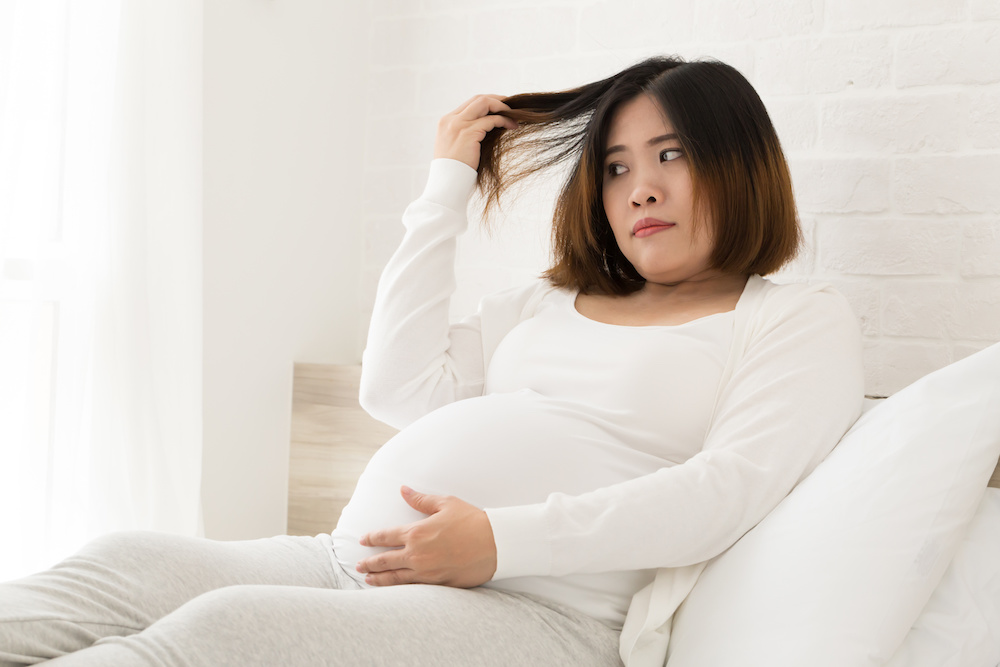A woman’s body goes through countless changes during and after pregnancy, but one aspect of motherhood that many may not expect is the sometimes sudden and severe hair loss that can occur after baby is born. Dr. Alan J. Bauman, a Board-certified hair restoration physician, joined Pregnancy Magazine to share the facts on new mom hair loss that every woman should know.
Here are five things new moms should know about postpartum hair loss:
1. It is more common than you think: While it may not be one of the most talked-about issues that women face postpartum, hair loss is in fact quite common, and has been shown to affect between 40 to 50 percent of women.
2. Prenatal vitamins are not the reason: Prenatal vitamins are often credited for hair growth seen during pregnancy, but the truth is, amazing hair growth during pregnancy has little or nothing to do with prenatal vitamins. Pregnancy hair growth and postpartum hair loss are actually triggered by hormonal fluctuations that occur during pregnancy and after childbirth. This sudden shift often causes the hair to shed and volume to decrease. The result of the shed is less coverage and more bare scalp on your head showing through.
3. It can be a sign of future permanent hair loss: Severe shedding that occurs after pregnancy may be indicative of things to come later in life. Women who experience hair loss when hormones shift after childbirth may be more prone to future permanent hereditary female type of hair loss. Many women with significant hereditary female pattern hair loss during menopause often tell me that their shedding and hair loss after pregnancy was severe and their hair never returned to its normal pre-pregnancy state.
4. It isn’t (usually) permanent: Postpartum hair loss tends to occur between three to six months after delivery, and varies in severity for each individual woman. The good news is that this type of loss is usually temporary, however, depending on the hair length that you started with, it can take up to a year or more for your hair to “feel” back to normal. Unfortunately, for some women, especially those who are at a high risk for hereditary hair loss, their head of hair never seems to fully recover its original fullness and volume. If you have a history of hair loss in your family (mother’s or father’s side, either gender) along with postpartum hair loss, then this warrants enlisting the help of a hair restoration physician who can create a “master plan” for monitoring and intervening if necessary. At a minimum you should enlist the help of a medical professional who can monitor and track what is happening to your hair volume and quality over time.
5. There are treatments available to stimulate healthy hair growth: If you feel you are experiencing worrisome postpartum shedding, there are several options available to help you stimulate healthy hair growth. New FDA-approved low-level laser devices from LaserCap, Theradome and Capillus, when used as directed and worn regularly, have been clinically proven to regrow hair without any drugs or side-effects. Another easy way to help your hair is to take specialized nutritional supplements which can boost healthy hair growth and improve the overall quality and appearance of your hair. Some effective choices include pharmaceutical-grade Viviscal Professional, which contains Amino-Mar (sustainable shark cartilage) as well as high-dose, medical-grade Biotin taken daily. Nutrafol is another high-tech hair supplement that has promised to be helpful for shedding. We could also consider applying an effective prescription topical medication to the scalp, such as compounded Minoxidil Formula postpartum or performing a “Vampire” PRP Platelet Rich Plasma treatment, as long as the new mom is not nursing. The bottom line is that there are solutions that your health care provider can provide safely and effectively.
The best thing you can do to take the guess work out of your hair situation is to track and monitor what is really happening by visiting a board-certified physician. HairCheck is a simple, painless, non-invasive way to measure and track the amount of hair growing (or shedding) in a given area of scalp. Tracking these numbers can help determine the extent and rate of any hair loss you may be experiencing and inform you of any changes over time.
Whatever you decide, it’s certainly best to be proactive and remain vigilant of the possibility that you may experience shedding after your baby is born. Postpartum hair loss may be just a natural part of the process, but it can also serve as a crystal ball for future permanent and more serious hair loss problems.
